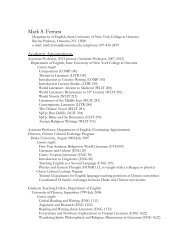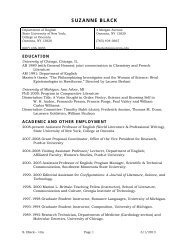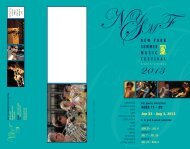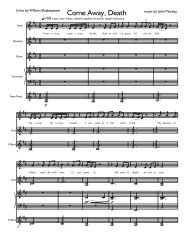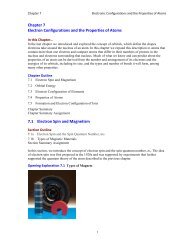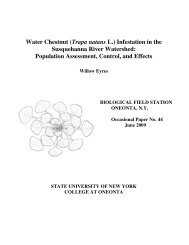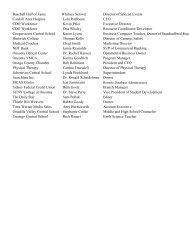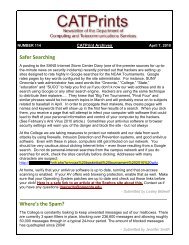quantitative analyses of periphyton biomass and ... - SUNY Oneonta
quantitative analyses of periphyton biomass and ... - SUNY Oneonta
quantitative analyses of periphyton biomass and ... - SUNY Oneonta
You also want an ePaper? Increase the reach of your titles
YUMPU automatically turns print PDFs into web optimized ePapers that Google loves.
plates, each 5 cm x 10 cm <strong>and</strong> having a designated area <strong>of</strong> 45 cm 2 on each<br />
side, were fed onto the plastic coated coat hanger wire. Plastic tubing, with a<br />
larger diameter, was cut into five pieces. Each piece fit tightly between each<br />
plate <strong>and</strong> between the blocks <strong>of</strong> wood <strong>and</strong> the nearest plate. This procedure<br />
was necessary to prevent the plates from scraping against each other when the<br />
water was turbulent.<br />
Each artificial substrate holder was piaced in an area <strong>of</strong> the stream that<br />
was deep enough to completely cover the plates <strong>and</strong> where the plates could<br />
receive as much incident light as possible. The holders were oriented so that<br />
the plates were parallel to the current. When necessary, heavy rocks were put<br />
near the sides <strong>of</strong> the holders for stabilization in faster currents. During the<br />
winter months, bricks were affixed to the bottom <strong>of</strong> the slate base to add weight<br />
to prevent the holders from being carried downstream by rapid currents <strong>and</strong> ice<br />
movements. This technique was not always successful.<br />
Collection, Preparation, <strong>and</strong> Analysis <strong>of</strong> Samples<br />
After 28 days <strong>of</strong> incubation in the streams, the plexiglass plates were<br />
removed <strong>and</strong> replaced with clean ones. After removal, the plates were placed<br />
in individual jars with stream water. As soon as the plates were brought back to<br />
the lab the <strong>periphyton</strong> was scraped <strong>of</strong>f <strong>and</strong> prepared for chlorophyll a <strong>and</strong> ash<br />
free dry weight (AFDW) analysis.<br />
For chlorophyll a analysis, <strong>periphyton</strong> samples were ·filtered using glass<br />
fiber filters (APHA 1989). The filters were then placed in vials <strong>and</strong> frozen until<br />
analysis could be performed. The <strong>periphyton</strong> samples for AFDW analysis were<br />
16



